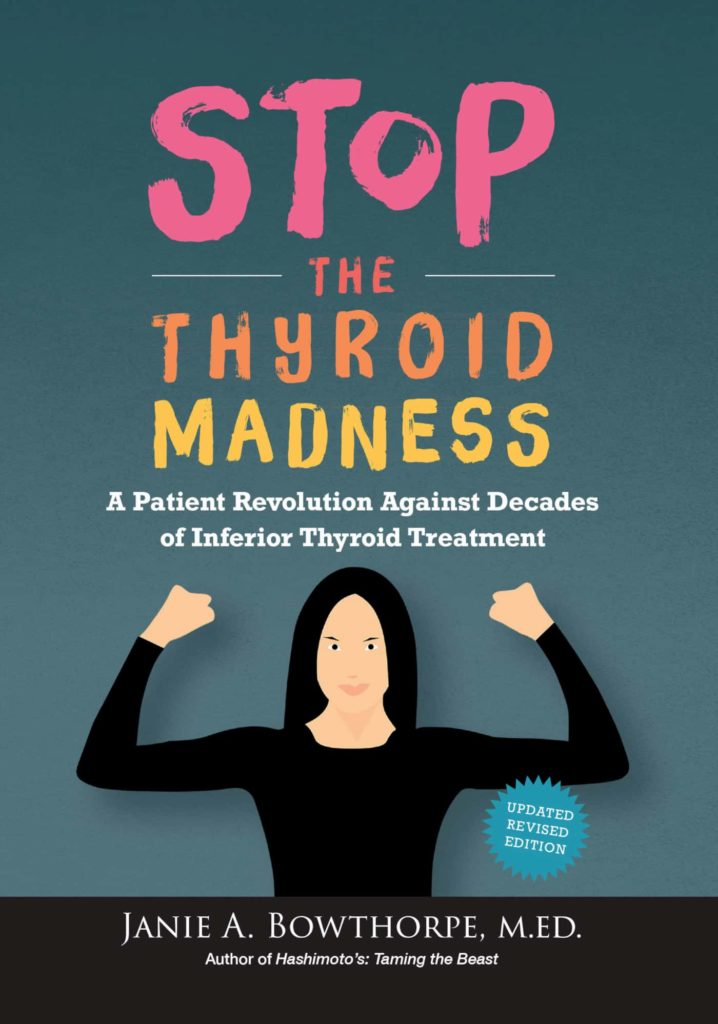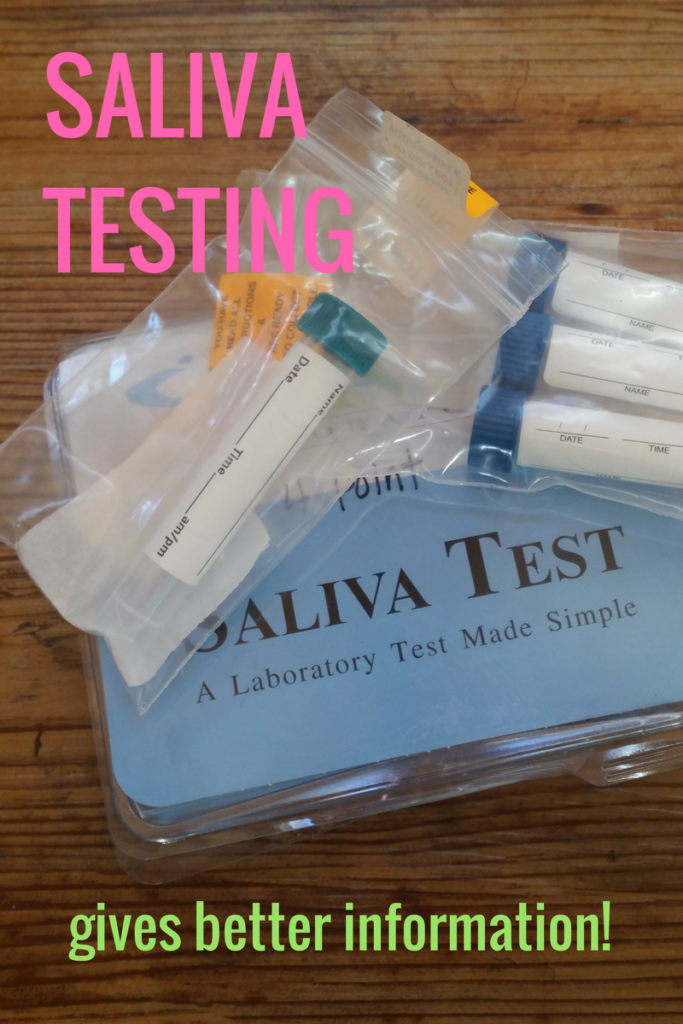Saliva Cortisol Test
In 2002, when I started the patient-to-patient Stop the Thyroid Madness movement, (even before it had that name), patients were discovering that there were a certain body who had a cortisol problem as revealed by the saliva cortisol test. (Blood cortisol wasn’t revealing it well). That cortisol problem was due to the stress of being on nothing but T4, but it can also happen from being on a recalled NDT, or being underdosed on even a good one or T4/T3 underdosing. Below is information about the test. ~Janie, hypothyroid patient and site creator
Why is it problematic to have a cortisol problem?
- If cortisol is too low (and this can even happen with high cortisol–most may be bound), thyroid hormones can’t get to the cells well, whether thyroid hormones made from our thyroid, or from thyroid meds. Cortisol is like the taxi to take your T3 out of the blood to your cells.
- If thyroid hormones can’t get to the cells well due to low cortisol, the T3 pools, going high in the blood and often causing hyper-like symptoms in some as they raise their thyroid meds.
- If cortisol is too high, we also tend to see our reverse T3 go up, making us more hypo.
What about high cortisol?
Even having too high cortisol can be a problem, we have noticed in ourselves for years. Besides the insomnia it can cause in many of us at bedtime, or frequent wake-ups right after we did fall asleep, we also saw how high cortisol pushed our Reverse T3 (RT3) higher and higher, which will also make us more hypothyroid. RT3 is an inactive thyroid hormone.
Why did patients start using saliva cortisol testing instead of blood??
At first in the early groups that thyroid patient activist Janie Bowthorpe had started, patients were using blood because our doctors prescribed it.
But we quickly heard about saliva cortisol testing. Saliva not only tests our “available-for-use, cellular, unbound” cortisol, but tests at four key times in the day. Blood does neither! Blood is measuring a combination of both bound and unbound cortisol, of which 90% or more can be bound and unusable! And blood testing, which is usually done once, doesn’t tell us what is going on the rest of the day.
Additionally, when in the early years patients were using both saliva and blood, the saliva results nearly always fit our symptoms, whereas blood didn’t always fit. That was insightful. So we quickly learned to say no to blood, and only use saliva cortisol testing.
Where do I order my own saliva test if I choose that route?
In the US or Canada, you can click on the graphic below to order an excellent saliva cortisol test by ZRT, which has been around since 1998. In other countries like the UK, there are facilities that offer saliva cortisol testing that you’ll need to find. Same with other countries. Some of you may need to travel to a country that offers it.

About facilities that use the “less than/more than” goals rather than the important ranges:
We learned to avoid those facilities. They don’t understand that it’s about “where” we fall that has meaning, not about “falling anywhere” below or above a number. But we leave that up to you.
Once I get my results back, how do I understand them?
We based our understanding on 18 years of observations: https://stopthethyroidmadness.com/lab-values You may have to teach this to your doctor.
How do I treat a cortisol problem revealed by my saliva test?

This is where you can read the patient-to-patient information in the updated revision Stop the Thyroid Madness book, chapters 5 and 6. We all have to be informed in treating this. You can read more about this Bible of Thyroid Treatment here. And all of it can be shared to an open-minded and wise doctor!
Why do I have a cortisol problem in the first place?
Our cortisol issues can definitely happen due to being on nothing but T4. They can happen even with T3 in our treatment, but if we stay underdosed. Please read the informative last chapter in the STTM II book as well–it does a bang-up job explaining how it all happens biologically! Then there are Chapters 5 and 6 in the updated revision STTM book, aka STTM I, shown above.
What about urine testing??
The most common urine test that doctors try to prescribe is a 24 hour urine test. But all it does is give an “average” and tells us nothing about what is going in at four key times–the latter which we as patients found to be crucial. Granted, it can be useful to diagnose Addison’s or Cushing’s disease. But most of us as thyroid patients with a cortisol issue have neither of those (even if someone may want to rule them out with their doctors). We simply have a cortisol problem based on the stress we encountered from being undiagnosed for so long, or being put on Synthroid or Levo–the latter T4-only meds which, because they are inadequate, stress our adrenals.
Another bad urine test, we have observed as patients? The Dutch. We’ve been shocked how many weird results have resulted from doing the Dutch cortisol test–results that don’t fit the person’s symptoms. It seems to be the minority whose results fit their symptoms. But we leave that up to you and your doctor.
WANT TO READ MORE??
- Discern if you have an adrenal problem via self-testing
- Symptoms of low cortisol (though you still need to do saliva testing to see what problems are where)
- Seven stages of Adrenal Fatigue
- The problem with the TSH lab test in diagnosing hypothyroidism or treating it
- Why T4-only meds like Synthroid or Levothyroxine can be a problem
- A study showing that saliva stays good in cold; not so much in warm.
Important note: STTM is an information-only site based on what many patients worldwide have reported in their treatment and wisdom over the years. This is not to be taken as personal medical advice, nor to replace a relationship with your doctor. By reading this information-only website, you take full responsibility for what you choose to do with this website's information or outcomes. See the Disclaimer and Terms of Use.
